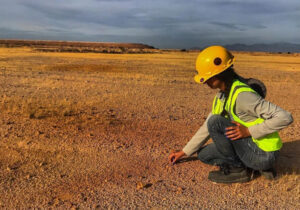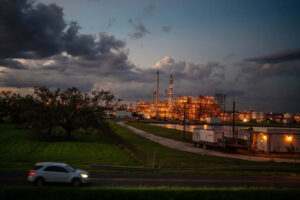Reducing Environmental and Occupational Cancer Risks Toolkit
Module 5: Advancing Health Equity with Environmental Justice
2. RACISM AS A RISK FACTOR
Environmental racism – racial discrimination in environmental policy making, lack of enforcement of regulations and laws, and the siting of toxic waste disposal and polluting industries in communities of color – increases cancer risk.

Source: https://dsl.richmond.edu/panorama/redlining/#loc=5/39.1/-94.58
Redlining consists of the systematic denial of services such as mortgages, insurance loans, and other financial services to residents seeking to live in specific city neighborhoods based on their race or ethnicity. This form of institutionalized racism occurred in over 200 cities across the U.S. and has created environmental cancer risks that are still manifested today. For example: a recent study examined environmental hazards associated with historically redlined neighborhoods in Detroit, Michigan. The study revealed significantly higher hazards than in non-redlined neighborhoods related to higher levels of diesel particulate matter, larger traffic volumes, more hazardous waste sites and higher cancer risks from hazardous air pollutants.
 Environmental injustices have also increased the cancer risk among those living in more rural environments, including among tribal communities. Across the U.S., uranium was often discovered near reservations where tribes were forced to move. Tribal treaties were violated, and land was opened-up for companies to extract resources at low cost. With lack of occupational safety oversights and protections, tribal community members working in the mines had high rates of cancer. One study found that the risk of developing lung cancer among Navajo men working in mines in Arizona and New Mexico was 20 to 30 times greater for Navajo men who were former uranium miners than Navajo men who had never worked in the mines. Although most mines are closed, the U.S. EPA continues to work with tribal communities to confront legacy pollution from mining activities and associated health impacts including higher rates bone cancers.
Environmental injustices have also increased the cancer risk among those living in more rural environments, including among tribal communities. Across the U.S., uranium was often discovered near reservations where tribes were forced to move. Tribal treaties were violated, and land was opened-up for companies to extract resources at low cost. With lack of occupational safety oversights and protections, tribal community members working in the mines had high rates of cancer. One study found that the risk of developing lung cancer among Navajo men working in mines in Arizona and New Mexico was 20 to 30 times greater for Navajo men who were former uranium miners than Navajo men who had never worked in the mines. Although most mines are closed, the U.S. EPA continues to work with tribal communities to confront legacy pollution from mining activities and associated health impacts including higher rates bone cancers.
 The stretch of the Mississippi River between New Orleans and Baton Rouge is nicknamed “Cancer Alley” because of its concentration of petrochemical facilities and studies demonstrating evidence of increased cancer risk as well as cancer rates in low-income and Black-dominated census tracts. Cancer Alley is one of the many examples of increased cancer incidence that can be directly attributed to environmental injustices. As described in this article, Black residents in southeastern Louisiana have a greater risk of cancer when compared to White residents, with children at one predominantly Black elementary school having been exposed to one carcinogen at levels 11 times what the U.S. EPA considers acceptable. The public school is about 1,500 feet from an industrial facility, which produces neoprene, a form of synthetic rubber used to manufacture wetsuits. It is the nation’s only industrial site that emits chloroprene, a human carcinogen as classified by the U.S. EPA. The health implications of the school being proximal to the industrial facility caused the U.S. EPA to make an official recommendation for state regulators to relocate the students.
The stretch of the Mississippi River between New Orleans and Baton Rouge is nicknamed “Cancer Alley” because of its concentration of petrochemical facilities and studies demonstrating evidence of increased cancer risk as well as cancer rates in low-income and Black-dominated census tracts. Cancer Alley is one of the many examples of increased cancer incidence that can be directly attributed to environmental injustices. As described in this article, Black residents in southeastern Louisiana have a greater risk of cancer when compared to White residents, with children at one predominantly Black elementary school having been exposed to one carcinogen at levels 11 times what the U.S. EPA considers acceptable. The public school is about 1,500 feet from an industrial facility, which produces neoprene, a form of synthetic rubber used to manufacture wetsuits. It is the nation’s only industrial site that emits chloroprene, a human carcinogen as classified by the U.S. EPA. The health implications of the school being proximal to the industrial facility caused the U.S. EPA to make an official recommendation for state regulators to relocate the students.
